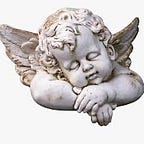Mondrian vs Mondrian
Mondrian. Trafalgar Square. 1939–40:
In this abstract painting of Trafalgar Square, Mondrian uses disproportional gridlines and rectangles of various sizes and colors to create asymmetry and simplicity for his impression of the popular public square in London. Unlike traditional gridlines that form perfectly-sized squares in between the lines, Mondrian disproportionately positions bold, black lines on both vertical and horizontal axes of the canvas. These irregular gridlines perpendicularly intersect with one another to create a sea of irregular rectangles; inside these rectangular spaces, Mondrian uses three colors — red, blue, and yellow — also known as primary colors to create a random, simple color pattern that contrasts with the large, white spaces that make up the majority of the painting. Mondrian simplifies this busy public square into basic elements like lines, rectangles, and planes, which forces his audiences to reimagine their original impression of a hectic public location. By limiting the variety of colors and the sense of depth in this painting with flat, asymmetric gridlines, Mondrian accurately highlights the key characteristics of Neo-Plasticism that first sparked in the early 1900s in Netherlands.
Due to its random color pattern and uneven geometric structure, this painting initially struck to me as asymmetric, confusing, and unorganized. However, after appreciating the details of the painting in real life, I have realized that this painting can also be seen as precisely organized and tidy because of its linear structure and the consistency of its bland colors. Every detail inside this painting looks perfectly planned-out by Mondrian because of its geometric organization and the simplicity of color within the spaces, similar to how perfectly organized a person’s closet can look like when it is organized by its function and color.
Mondrian. Broodway Boogie-Woogie. 1942–43:
Exhibited next to Trafalgar Square on the 5th floor of MoMA is another abstract painting that is named after a public location by Piet Mondrian called, Broadway Boogie-Woogie. Following distinct qualities of the De Stijl movement, Broadway Boogie-Woogie is entirely constructed with horizontal and vertical lines and rectangles in primary colors and different shades of white and grey, which contrasts with one another and unevenly divides the attention of the viewers in this particular painting. From the top of the canvas to the bottom, Mondrian frequently positions a box of a lighter color within a rectangular space instead of coloring in the entire space in one solid primary color. This unique layering technique creates potentials for layers of depth and architectural structure inside a two-dimensional painting, making the painting look more complex than it actually is. Most importantly, the contrast of colors in this complex net of vertical and horizontal gridlines adds vibrant tension and motion, as if the lines are mimicking countless of cars — portrayed as colored rectangular boxes — lined up on Broadway and other busy streets in New York City during rush hour traffic. Due to the repetition of colors in the gridlines, each individual section of colors in the line seems to me as if it is its own rectangular box that collectively makes up a linear line, not the other way around.
